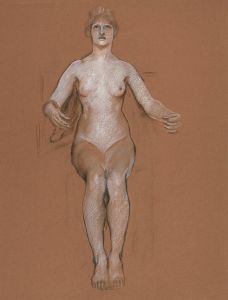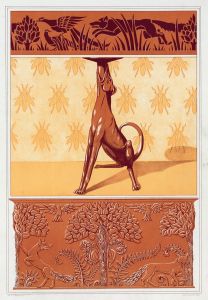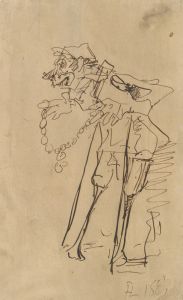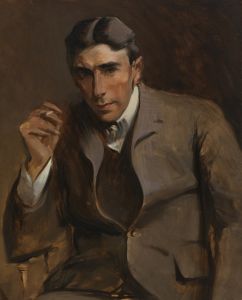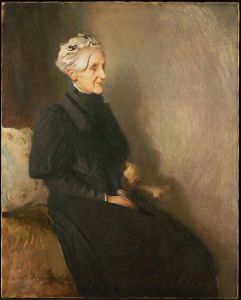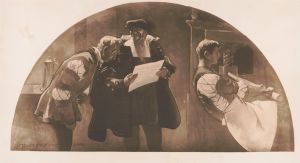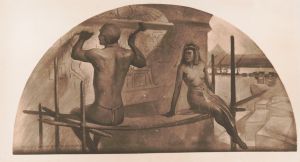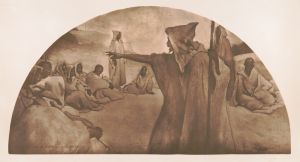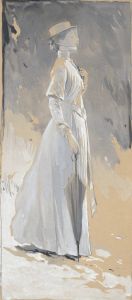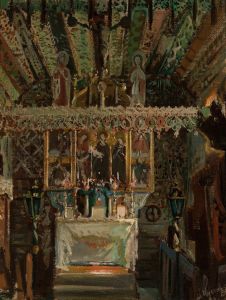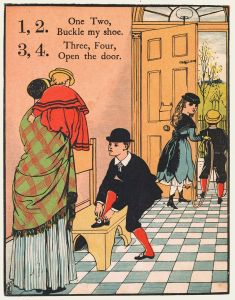
Cairn mural in Evolution of the Book series
A hand-painted replica of John White Alexander’s masterpiece Cairn mural in Evolution of the Book series, meticulously crafted by professional artists to capture the true essence of the original. Each piece is created with museum-quality canvas and rare mineral pigments, carefully painted by experienced artists with delicate brushstrokes and rich, layered colors to perfectly recreate the texture of the original artwork. Unlike machine-printed reproductions, this hand-painted version brings the painting to life, infused with the artist’s emotions and skill in every stroke. Whether for personal collection or home decoration, it instantly elevates the artistic atmosphere of any space.
John White Alexander's "Cairn" is one of the murals in the "Evolution of the Book" series, a collection of large-scale paintings created by the American artist for the Library of Congress in Washington, D.C. Completed in 1896, the series was commissioned as part of the decorative program for the Thomas Jefferson Building, which opened to the public in 1897. Alexander, known for his elegant and fluid Art Nouveau style, was among several prominent artists of the time chosen to contribute to the library's interior decoration.
The "Evolution of the Book" series explores the development of written communication and the transmission of knowledge throughout human history. "Cairn," specifically, represents an early stage in this evolution. A cairn is a man-made pile of stones, historically used as a marker or memorial. In the context of the mural, it symbolizes one of humanity's earliest attempts to record information or commemorate events. The painting features a group of figures engaged in the act of constructing a cairn, emphasizing the communal and symbolic nature of this practice.
Alexander's murals in the Library of Congress are characterized by their harmonious compositions, soft color palettes, and allegorical themes. In "Cairn," the artist employs a subdued yet evocative style to convey the significance of early human efforts to communicate and preserve meaning. The figures are depicted in flowing garments, with a sense of movement and purpose that reflects Alexander's mastery of form and his ability to imbue his subjects with a sense of timelessness.
The "Evolution of the Book" series is located in the South Reading Room of the Thomas Jefferson Building, where it continues to be admired as part of the library's rich artistic heritage. Alexander's work, including "Cairn," contributes to the overarching theme of the building's decoration, which celebrates human creativity, knowledge, and progress. The murals serve not only as decorative elements but also as visual narratives that complement the library's mission as a repository of learning and culture.
John White Alexander's contributions to the Library of Congress are considered among his most significant achievements. His work on the "Evolution of the Book" series reflects the broader cultural and artistic movements of the late 19th century, particularly the emphasis on allegory and the integration of art into public spaces. "Cairn" remains an enduring example of his talent and a testament to the importance of art in interpreting and celebrating human history.





